History of computers: Overview of the formation and development of computers
Computers were born not for entertainment or sending emails, but to solve a serious crisis related to superfast computing. By 1880, the U.S. population had grown so large that it took more than seven years to tabulate the census results. The government sought a quicker way to get work done, creating punch-card-based computers that took up entire rooms.
The following brief history of computers summarizes the stages in the evolution of computers, from their humble beginnings to the machines we use today to surf the Internet, play games and stream multimedia, in addition to super speed calculation.
The formation and development of computers

1801: In France, Joseph Marie Jacquard invents a weaving machine that uses punched wooden cards to automatically weave fabric designs. Early computer models used similarly punched cards.
1822: British mathematician Charles Babbage 'conceived' the idea of a steam-driven computer that could calculate tables of numbers. The project, funded by the British government, later failed. However, more than a century later, the world's first computer was actually built. According to Wikipedia, Charles Babbage is the "father of computers", the person whose ideas about computers are most similar to what we see today.
1890: Herman Hollerith designs a punch card system to calculate the 1880 census, completing the task in just three years and saving the government $5 million. He founded the predecessor company of today's IBM Corporation.
1936: Alan Turing presents the concept of a universal machine, later known as the Turing machine, capable of computing anything that can be calculated. The core concept of modern computers is based on this idea of his.
1937: JV Atanasoff, professor of physics and mathematics at Iowa State University, tries to build the first computer without gears, belts or shafts.
1939: The Hewlett-Packard Company was founded by David Packard and Bill Hewlett in a garage in Palo Alto, California (according to the Computer History Museum).
1941: Atanasoff and his student, Clifford Berry, designed a computer that could solve 29 equations simultaneously. This marked the first time a computer could store information in its main memory.
1943 - 1944 : Two professors from the University of Pennsylvania, John Mauchly and J. Presper Eckert, built the Electronic Numerical Integrator and Calculator (ENIAC) computer. Considered the 'grandfather' of modern digital computers, its massive body occupies a room with an area of 6x12m, includes 40 shelves 2.4m high and has 18,000 vacuum tubes. It is capable of processing 5,000 calculations per second and operates faster than any previous device.
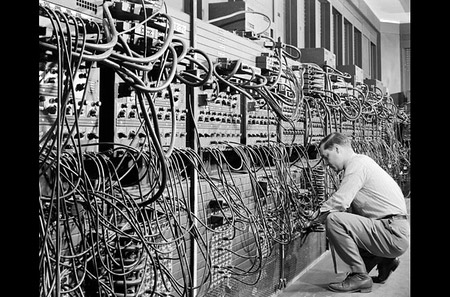
1946: Mauchly and Presper leave the University of Pennsylvania and receive funding from the Census Bureau to build the UNIVAC, the first commercial computer for business and government applications.
1947: William Shockley, John Bardeen and Walter Brattain of Bell Laboratories invented the transistor. They discovered how to make an electrical switch out of solid materials and without the need for a vacuum.
1953: Grace Hopper develops the first computer language, eventually called COBOL. Thomas Johnson Watson Jr., son of IBM CEO Thomas Johnson Watson Sr., devised the IBM 701 EDPM to help the United Nations monitor North Korea during the war.
1954: The FORTRAN programming language, short for FORmula TRANslation, was developed by a group of programmers at IBM led by John Backus (according to the University of Michigan). Also this year the giant computational defense system SAGE was designed to help the Air Force track radar data in real time. The product is equipped with technological advances such as modems and graphic displays. The system weighs up to 300 tons and takes up an entire room.
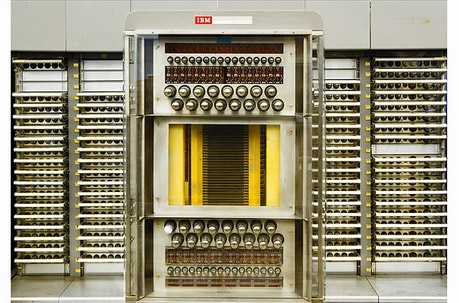
1958: Jack Kilby and Robert Noyce publicize integrated circuits, known as computer chips. Kilby was awarded the Nobel Prize in Physics in 2000 for his work.
1960: The NEAC 2203 was manufactured by Nippon Electric Company (NEC) and was one of the earliest semiconductor computers in Japan. They are applied in the fields of business, science and technical applications.
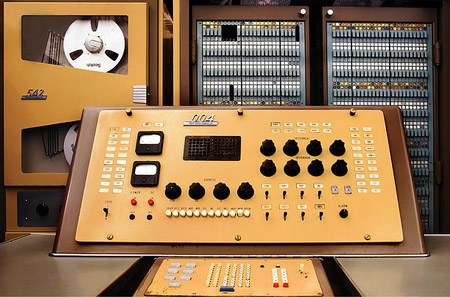
NEAC 2203
1964: Douglas Engelbart presents the prototype of the modern computer, with a mouse and a graphical user interface (GUI). This marked the evolution of the computer from a specialized machine for scientists and mathematicians to a technology more accessible to the general public.
1964: Also in this year, the IBM System/360 was introduced, it was the first computer to control the entire range of applications from small to large, from commercial to scientific. Users can enlarge or reduce their settings without having to worry about software upgrades. The high-end System/360 models played a large role in NASA's Apollo missions as well as air traffic monitoring systems.
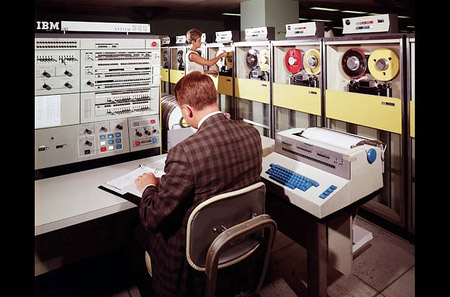
1964: The CDC 6600 was designed by computer architect Seymour Cray and was once the fastest computer in the world. The product remained the 'speed champion' until 1969 when Cray designed his next supercomputer.
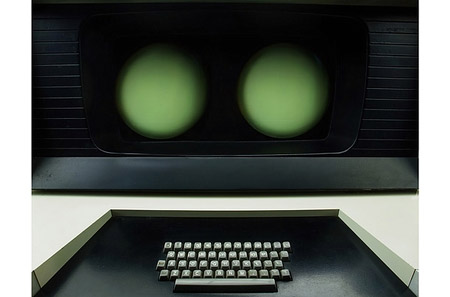
CDC 6600 computer
1965: The DEC PDP-8 was built by the Digital Equipment Company (DEC) and was the first minicomputer to be successfully commercialized. When launched, the DEC PDP-8 sold more than 50,000 units. They can perform all the tasks of a large computer but cost only about 16,000 USD while IBM's System/360 costs hundreds of thousands of USD.
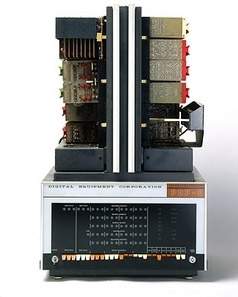
DEC PDP-8 calculator
1969: A group of developers at Bell Labs produces UNIX, an operating system that solves compatibility problems. Written in the C programming language, UNIX is portable on many platforms and has become the operating system of choice at many large companies and government organizations. Due to the slow nature of the system, UNIX never attracted home PC users.
1969 also marked the birth of the Interface Message Processor (IBP) that characterized the first generation of gateways and are known today as routers. Thus, IMP performed important tasks in developing the world's first packet switching network (ARPANET) and was the predecessor of today's global Internet.
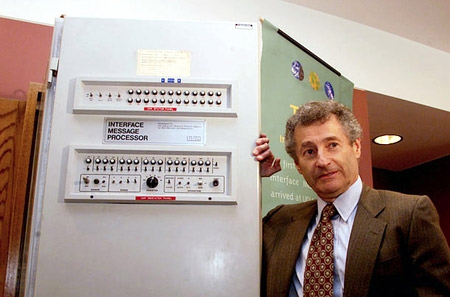
1970: The newly formed Intel company announced the Intel 1103, the first Dynamic Access Memory (DRAM) chip.
1971: Alan Shugart led a team of IBM engineers who invented the "floppy disk," allowing data to be shared between computers. At the same time, Kenbak-1 was born. The product was considered the world's first personal computer and was introduced as an easy-to-use educational tool but it failed to sell more than a dozen units. Lacking a microprocessor, they only have 256B of computing power and their output is just a series of flashing lights.
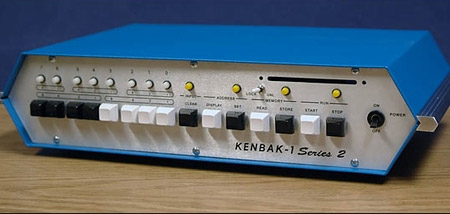
1973: Robert Metcalfe, a member of Xerox's research team, developed Ethernet to connect many computers and other hardware.
1974 - 1977 : Several personal computers hit the market, including the Scelbi & Mark-8 Altair, the IBM 5100, Radio Shack's TRS-80 (affectionately known as the "Trash 80"), and the PEToreore.
1975: The January issue of Popular Electronics magazine described the Altair 8080 as "the world's first minicomputer". Two computer geeks, Paul Allen and Bill Gates, proposed writing software for the Altair, using the new BASIC language. On April 4, following the success of this first effort, the two childhood friends founded their own software company, Microsoft.
1976: Apple I was conceived by Steve Wozniak but was rejected by his bosses at HP. Undeterred, he offered them to the Homebrew computer club in Silicon Valley and with his friend Steve Jobs managed to sell 50 pre-designed models to the Byte Shop in Mountain View, California at a price of about 666 USD. Steve Jobs and Steve Wozniak laid the foundation for the birth of Apple computers on April Fool's Day. The Apple I was the first computer with a single circuit board (according to Stanford University).
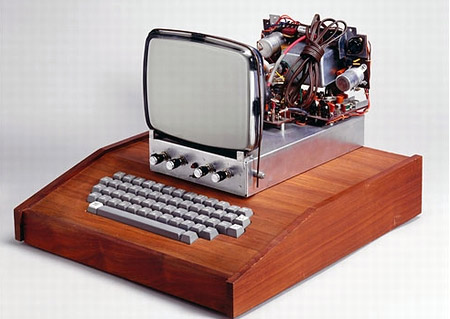
Apple I computer
1976: Cray-1 was released, at that time the fastest computing machine in the world. Even though the price is about 5-10 million USD, it still sells well. They are among the products designed by computer architect Seymour Cray. He devoted his whole life to creating so-called supercomputers.
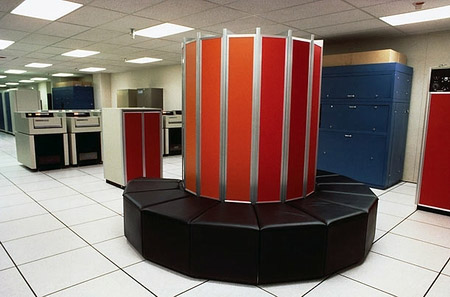
Cray-1 Computer
1977: Radio Shack's TRS-80 first produced was only 3,000 and sold very well. For the first time, people who were not geeks could write programs and make computers do what they wanted.
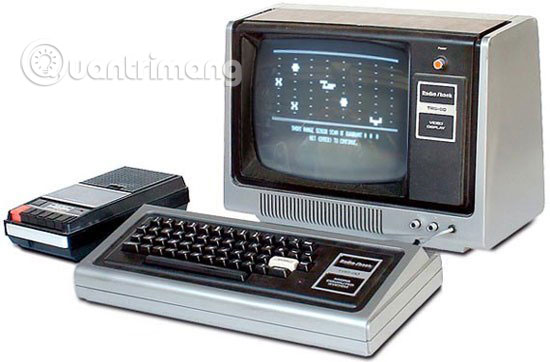
Computer TRS-80
1977: Jobs and Wozniak merge Apple and launch the Apple II at the first West Coast Computer Faire. The Apple II provided color graphics and incorporated an audio cassette drive for storage.
1978: Accountants rejoice with the introduction of VisiCalc, the first computer spreadsheet program.
1979: Word processing becomes a reality when MicroPro International releases Wordstar. "The most important changes are the addition of margins and the word wrap property (which makes words line down without breaking the layout)," said Rob Barnaby, creator of VisiCalc. Other changes include removing command mode and adding print functionality.
1981: IBM's first personal computer, named "Acorn", was introduced. Acorn uses Microsoft's MS-DOS operating system, has an Intel chip, two floppy drives and an optional color screen. Sears & Roebuck and Computerland sold the computers, marking the first time the computers were available through outside distributors. This also made the term PC popular.
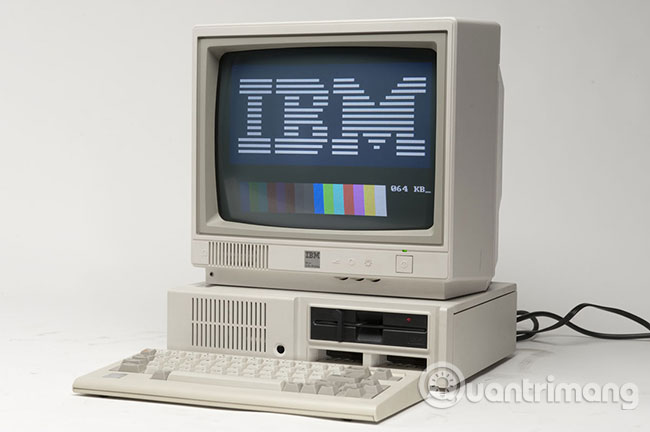
1981: The Osborne 1 mobile computer was the first commercialized mobile computer, weighing 10.8kg and costing less than 2000 USD. They became popular because of their low cost and the extensive software library that comes with them.
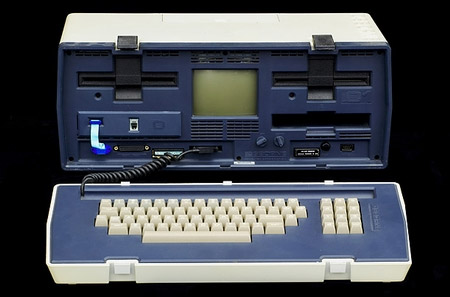
Osborne 1 mobile computer
1983: Apple's Lisa is the first personal computer with a GUI. Lisa also has a drop-down menu and icons. It failed but was eventually developed into the Macintosh. The Gavilan SC was the first laptop to feature the familiar flip form factor and the first to be marketed as a "laptop".
1983: The Hewlett-Packard 150 was born, representing the first step in expanding today's technology. The HP 150 was the first computer commercialized with touch screen technology. The product's 9-inch touch screen is equipped with ambient infrared receivers and emitters to detect the user's finger position.
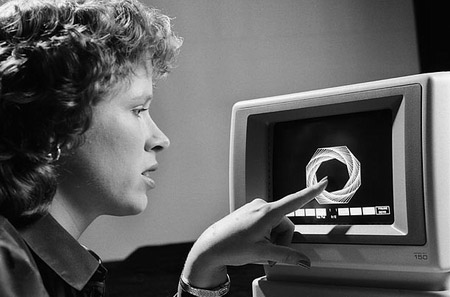
Hewlett-Packard 150 calculator
1985: Microsoft announced Windows (according to Encyclopedia Britannica). This is this company's response to Apple's GUI. Commodore announces the Amiga 1000, featuring advanced audio and video.
1985: The first .com domain is registered on March 15, years before the World Wide Web marked the official beginning of Internet history. Symbolics Computer Company, a small computer manufacturer in Massachusetts, registered Symbolics.com. More than two years later, there are only 100 .com domains registered.
1986: Compaq brings the Deskpro 386 to market. Its 32-bit architecture provides speeds comparable to mainframe computers.
1990: Tim Berners-Lee, a researcher at CERN, the high-energy physics laboratory in Geneva, develops HyperText Markup Language (HTML), creating the World Wide Web.
1993: Pentium microprocessors spur the use of graphics and music on PCs.
1994: The PC becomes a gaming powerhouse, with the release of games such as "Command & Conquer", "Alone in the Dark 2", "Theme Park", "Magic Carpet", "Descent" and "Little Big Adventure" was released to the market.
1996: Sergey Brin and Larry Page develop the Google search engine at Stanford University.
1997: Microsoft invests $150 million in then-struggling Apple, ending Apple's court case against Microsoft, which alleged that Microsoft had copied the "look and feel" of Apple's operating system. Also around this time, the Deep Blue project (started at IBM in the late 80s, created to solve difficult problems using parallel processing technology) defeated the chess champion. world king, Garry Kasparov.
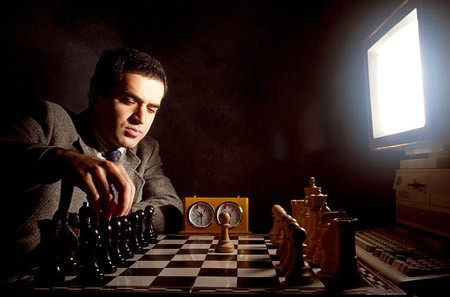
World Chess Champion 1997, Garry Kasparov
1999: The term WiFi becomes part of the computing language and users begin connecting to the Internet wirelessly.
2001: Apple announces the Mac OS X operating system, which offers a protected memory structure and preemptive multi-tasking, among other benefits. Not to be outdone, Microsoft launched Windows XP, which had a redesigned GUI with many significant changes.
2003: The first 64-bit processor, AMD's Athlon 64, becomes available to the consumer market.
2004: Mozilla's Firefox 1.0 challenges Microsoft's Internet Explorer, the dominant web browser at the time. This is also the year Facebook, a social networking site, officially launched.
2005: YouTube, a video sharing service, is founded. Google acquires Android, a Linux-based mobile operating system.
2006: Apple introduces the MacBook Pro, the first dual-core, Intel-based mobile computer, as well as the Intel-based iMac. In the same year, Nintendo's Wii console game was also released to the market.
2007: The introduction of the iPhone brings many computing functions to smartphones.
2009: Microsoft launches Windows 7, which offers the ability to pin apps to the taskbar, as well as advances in touch and handwriting recognition, among many other features.
2010: Apple launches the iPad, changing the way consumers consume media and kick-starting the currently dormant tablet segment.
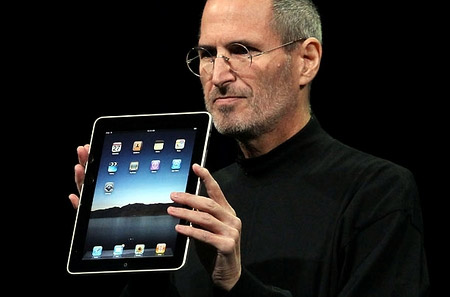
2011: Google releases Chromebooks, laptops running Google Chrome OS.
2012: Facebook reaches 1 billion users on October 4.
2015: Apple releases Apple Watch. Microsoft released Windows 10.
2016: The first reprogrammable quantum computer is created. "To date, there have not been any quantum computing platforms capable of programming new algorithms into the system. They are often designed to penetrate a specific algorithm," according to study author Shantanu Debnath, a quantum physicist and optical engineer at the University of Maryland, College Park.
2017: The Defense Advanced Research Projects Agency (DARPA) is developing a new "Molecular Informatics" program, which uses molecules as computers. "Chemistry provides a rich set of properties. resources that we can exploit to store and process information quickly," said Anne Fischer, program manager at DARPA's Defense Sciences division, in a statement.
"Millions of molecules exist, and each molecule has a unique three-dimensional atomic structure as well as variables such as shape, size or even color. This richness provides a vast design space, to explore new, multi-valued ways to encode and process data beyond the zeros and ones of current logic-based digital architectures."
Types of computers
Analog computer
Analog computers are built with various components such as gears and levers, with no electrical components. The advantage is that designing and building an analog computer to solve a specific problem can be quite simple.
Digital computer
Information in digital computers is represented in discrete form, usually as strings of 0s and 1s (binary digits or bits). A digital computer is a system or gadget that can process any type of information in just a few seconds. Digital computers are classified into many different types, including:
- Mainframe computer – This is a computer often used by large businesses for important activities such as large data processing. Mainframe computers are distinguished by their large storage capacity, fast components, and powerful computing capabilities. Because they are complex systems, they are managed by a team of system programmers who have deep access to the computer. These machines are now called servers instead of mainframe computers.
- – The most powerful computers to date are often called supercomputers. Supercomputers are giant systems built to solve complex scientific and industrial problems. Quantum mechanics, weather forecasting, oil and gas exploration, molecular modeling, physics simulation, aerodynamics, nuclear fusion research and cryptanalysis are all performed on supercomputers.
- Mini Computers – Mini computers are computers that have many of the same features and capabilities as mainframe computers but are smaller in size. Minicomputers, which are relatively small and affordable, are typically used within one department of an organization and are often dedicated to a specific task or shared by a small group.
- Microcomputer – A microcomputer is a small computer based on a microprocessor integrated circuit, commonly known as a chip. A computer is a system that combines at least a microprocessor, program memory, data memory, and an input-output (I/O) system. Computers today are often called personal computers (PC).
- Embedded processors – These are miniature computers that control electrical and mechanical processes using basic microprocessors. Embedded processors typically have simple designs, have limited processing power, I/O capabilities, and require little power. Conventional microprocessors and microcontrollers are the two main types of embedded processors. Embedded processors are used in systems that do not require the computing power of traditional devices such as desktop computers, laptops or workstations.
You should read it
- How to clear Bing AI search and chat history
- Quiz: Are you a computer savvy person?
- See the wonderful images of the world's first computer layout
- Computer History: Brief history of formation and development
- How to use the history command in Linux
- How to Delete Your Usage History Tracks in Windows
- Sync bookmarks, extensions and other browser data between computers
- 3 Extensions that support managing browsing history in Chrome
May be interested
- 26 important days in computing history
 the way the computer industry has become modern is not simple today. it includes many milestones marking many different stages of development.
the way the computer industry has become modern is not simple today. it includes many milestones marking many different stages of development. - The 'first' of the phone
 here are some of the 'first' of technology in smartphone development history.
here are some of the 'first' of technology in smartphone development history. - Learn about the secret of Mercury formation
 the discovery supports the hypothesis of mercury's formation.
the discovery supports the hypothesis of mercury's formation. - What is the OS (Operating System)? Overview of the operating system (OS)
 computers, tablets, smartphones, or even modern tvs all have operating systems (os) inside. however, there are many people who still use it every day but never know what the operating system is. the following article will introduce an overview of the operating system to help you better understand.
computers, tablets, smartphones, or even modern tvs all have operating systems (os) inside. however, there are many people who still use it every day but never know what the operating system is. the following article will introduce an overview of the operating system to help you better understand. - What is JavaScript? Can the Internet exist without JavaScript?
 not everyone knows what javascript is and how it works. the long and fascinating development history of javascript as well as what we can do with javascript is still unknown.
not everyone knows what javascript is and how it works. the long and fascinating development history of javascript as well as what we can do with javascript is still unknown. - [Infographic] History of data compression
![[Infographic] History of data compression](https://tipsmake.com/img/no-image-80-80.png) in information technology, data compression is the transfer of information format using less capacity than shown in the original data. currently, this encryption algorithm is used very popular in many fields around the world. the following infographic will introduce the history of formation as well as characteristics and features related to this useful tool.
in information technology, data compression is the transfer of information format using less capacity than shown in the original data. currently, this encryption algorithm is used very popular in many fields around the world. the following infographic will introduce the history of formation as well as characteristics and features related to this useful tool. - Looking back on 60 years of miraculous development of hard drives today
 the hard drive was first founded in 1956 by the ibm corporation. from a capacity of 5 megabytes, the hard drive has now reached 60 tb, up 12 million times. the hard drive was born that opened a new page in the history of technology development at that time.
the hard drive was first founded in 1956 by the ibm corporation. from a capacity of 5 megabytes, the hard drive has now reached 60 tb, up 12 million times. the hard drive was born that opened a new page in the history of technology development at that time. - History of Linux operating system, a strange development path
 the development process of linux is a strange journey. 'many people don't even know they're using it. linux is everywhere.
the development process of linux is a strange journey. 'many people don't even know they're using it. linux is everywhere. - 7 random inventions but have an extremely important role in the history of human development
 sometimes due to improvisation or a small accident, people invented products that have played an important role in the history of human development.
sometimes due to improvisation or a small accident, people invented products that have played an important role in the history of human development. - Mobile games are the most influential in the history of phone development
 below is a list of the most influential mobile games in the history of phone development, which are not the best games, the best graphics or the most popular but they have a great impact on player.
below is a list of the most influential mobile games in the history of phone development, which are not the best games, the best graphics or the most popular but they have a great impact on player.





![[Infographic] History of data compression](https://tipsmake.com/data/thumbs_80x80/[infographic]-history-of-data-compression_thumbs_80x80_laZ9TXnmX.jpg)




 Website Test Keyboard computer keyboard online, free
Website Test Keyboard computer keyboard online, free How to use Sound Booster to increase computer and laptop volume
How to use Sound Booster to increase computer and laptop volume How to use Furmark to test VGA, CPU, GPU of computer
How to use Furmark to test VGA, CPU, GPU of computer How to upgrade computer RAM most effectively
How to upgrade computer RAM most effectively How to fix computer screen error
How to fix computer screen error Instructions to increase speaker volume with DFX Audio Enhancer, increase computer speaker volume
Instructions to increase speaker volume with DFX Audio Enhancer, increase computer speaker volume